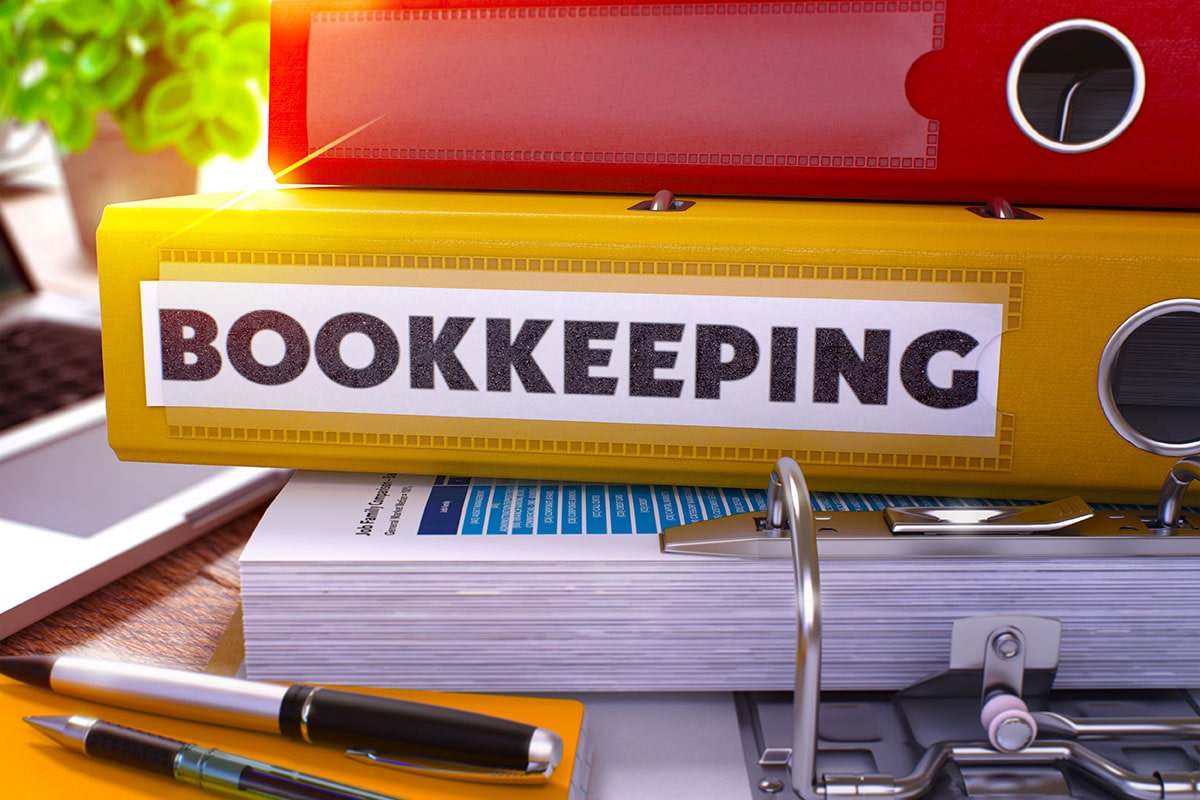How to Keep Books for a Small Business: Bookkeeping & Accounting Basics

Running a small business is a challenging yet rewarding endeavor. One of the most critical aspects of managing your business effectively is keeping accurate and up-to-date financial records. Bookkeeping and accounting are essential components of this process. They not only help you track your income and expenses but also ensure compliance with legal requirements and aid in making informed business decisions.
In this blog, we will explore the fundamentals of bookkeeping and accounting for small businesses, providing you with a comprehensive guide to maintaining your financial records.
Understanding Bookkeeping and Accounting

Before diving into the specifics, it’s important to distinguish between bookkeeping and accounting. While these terms are often used interchangeably, they refer to different aspects of managing your business’s finances.
Bookkeeping involves the systematic recording of financial transactions. This includes recording sales, purchases, receipts, and payments. Bookkeepers are responsible for ensuring that all financial transactions are documented accurately and in a timely manner.
Accounting, on the other hand, involves interpreting, classifying, analyzing, reporting, and summarizing financial data. Accountants use the information recorded by bookkeepers to prepare financial statements, perform audits, and provide insights into the financial health of the business.
Setting Up Your Bookkeeping System

To start keeping books for your small business, you need to set up a reliable bookkeeping system. Here are the steps to get you started:
1. Choose Your Bookkeeping Method
There are two primary bookkeeping methods: single-entry and double-entry bookkeeping.
- Single-entry bookkeeping is a straightforward method suitable for very small businesses with simple transactions. It involves recording each transaction only once. This method is similar to maintaining a checkbook register.
- Double-entry bookkeeping is more complex but provides a more comprehensive view of your financial situation. Each transaction is recorded twice, once as a debit and once as a credit, ensuring that the accounting equation (Assets = Liabilities + Equity) always remains balanced.
Most small businesses benefit from using double-entry bookkeeping due to its accuracy and the detailed financial information it provides.
2. Select Your Accounting Software
Investing in accounting software can significantly streamline your bookkeeping process. There are many options available, ranging from simple solutions for small businesses to more advanced systems for larger enterprises. Some popular accounting software for small businesses includes QuickBooks, Xero, and FreshBooks. These tools help automate many bookkeeping tasks, reduce errors, and save time.
3. Create a Chart of Accounts
A chart of accounts is a list of all the accounts your business uses to record transactions. It organizes your financial information into categories, such as assets, liabilities, equity, revenues, and expenses. Setting up a well-structured chart of accounts is crucial for accurate financial reporting. Your accounting software will often provide a default chart of accounts, which you can customize to fit your business’s needs.
Recording Financial Transactions

Accurate record-keeping is the backbone of effective bookkeeping. Here’s how to record various types of financial transactions:
1. Sales and Revenue
Record all sales transactions in your accounting system. This includes cash sales, credit sales, and online sales. Make sure to include details such as the date, amount, customer name, and description of the product or service sold. Regularly reconciling your sales records with your bank statements ensures that you haven’t missed any transactions.
2. Purchases and Expenses
Document all business expenses, including supplies, utilities, rent, and salaries. For each expense, record the date, amount, vendor, and purpose of the expense. Keeping receipts and invoices organized is essential for verifying your expenses during tax time.
3. Accounts Receivable and Accounts Payable
- Accounts Receivable: Track money owed to your business by customers. Record each invoice you issue and monitor payments received. Following up on outstanding invoices promptly helps maintain a healthy cash flow.
- Accounts Payable: Track money your business owes to suppliers and vendors. Record each bill you receive and ensure timely payments to avoid late fees and maintain good relationships with your suppliers.
4. Payroll
If you have employees, keeping accurate payroll records is crucial. Record employee wages, salaries, bonuses, and deductions. Ensure compliance with tax regulations by withholding the appropriate taxes and making timely payments to tax authorities.
Reconciliation and Financial Statements

Regular reconciliation and the preparation of financial statements are essential for maintaining accurate books and gaining insights into your business’s financial health.
1. Bank Reconciliation
Reconcile your bank statements with your accounting records regularly (monthly, if possible). This process involves comparing your recorded transactions with your bank statements to ensure they match. Identifying discrepancies early helps prevent errors and fraud.
2. Financial Statements
Financial statements provide a snapshot of your business’s financial performance and position. The three primary financial statements are:
- Income Statement: Also known as the “Profit and Loss Statement,” it summarizes your revenues, expenses, and profits over a specific period. This statement helps you assess your business’s profitability.
- Balance Sheet: It provides a snapshot of your business’s assets, liabilities, and equity at a specific point in time. The balance sheet helps you understand your business’s financial position and solvency.
- Cash Flow Statement: It shows the inflow and outflow of cash within your business over a period. The cash flow statement helps you monitor your cash flow and ensures you have enough cash to meet your obligations.
Tax Compliance and Reporting

Complying with tax regulations is a critical aspect of bookkeeping. Here are some key points to consider:
1. Understand Your Tax Obligations
As a small business owner, you need to understand your tax obligations, including income tax, self-employment tax, payroll tax, and sales tax. Familiarize yourself with the tax rates, deadlines, and forms required for your business.
2. Keep Detailed Records
Maintain detailed records of all your financial transactions, including income, expenses, and deductions. These records are essential for preparing accurate tax returns and supporting your claims in case of an audit.
3. Deductible Expenses
Identify and document deductible business expenses. Common deductible expenses include office supplies, rent, utilities, travel expenses, and marketing costs. Keeping track of these expenses can reduce your taxable income and lower your tax liability.
4. Hire a Tax Professional
Consider hiring a tax professional, such as a Certified Public Accountant (CPA), to assist with tax planning and preparation. A tax professional can help you navigate complex tax laws, maximize deductions, and ensure compliance with tax regulations.
Best Practices for Effective Bookkeeping

Implementing best practices in your bookkeeping process can help you maintain accurate and organized financial records. Here are some tips:
1. Stay Organized
Keep your financial documents organized and easily accessible. Use folders, labels, and digital storage solutions to categorize and store receipts, invoices, and other important documents. An organized system makes it easier to find information when needed.
2. Separate Personal and Business Finances
Maintain separate bank accounts and credit cards for your personal and business finances. Mixing personal and business finances can lead to confusion, errors, and potential legal issues. Keeping them separate ensures accurate record-keeping and simplifies tax reporting.
3. Automate Where Possible
Leverage accounting software and automation tools to streamline your bookkeeping tasks. Automating tasks such as invoicing, expense tracking, and bank reconciliation reduces manual work, minimizes errors, and saves time.
4. Monitor Cash Flow
Regularly monitor your cash flow to ensure you have enough funds to cover your expenses. Prepare cash flow forecasts to anticipate future cash needs and plan accordingly. Keeping a close eye on your cash flow helps you avoid cash shortages and financial difficulties.
5. Review and Update Regularly
Review your financial records and statements regularly to identify any discrepancies or errors. Make updates promptly to ensure your records are accurate and up-to-date. Regular reviews also help you stay informed about your business’s financial health and performance.
Common Bookkeeping Mistakes to Avoid

Avoiding common bookkeeping mistakes can save you time, money, and headaches. Here are some pitfalls to watch out for:
1. Procrastination
Delaying your bookkeeping tasks can lead to a backlog of unrecorded transactions, making it difficult to catch up. Set aside regular time each week to update your books and stay on top of your financial records.
2. Neglecting Reconciliation
Failing to reconcile your bank statements with your accounting records can result in undetected errors and discrepancies. Regular reconciliation ensures that your records are accurate and helps identify potential issues early.
3. Inconsistent Record-Keeping
Consistency is key to accurate bookkeeping. Ensure that you record transactions promptly and consistently. Use standardized procedures and formats for recording transactions to maintain uniformity.
4. Ignoring Receipts and Invoices
Losing or neglecting receipts and invoices can lead to incomplete records and missed deductions. Keep all receipts and invoices organized and stored securely. Use digital tools to scan and store documents electronically for easy access.
5. Lack of Backup
Failing to back up your financial data can result in data loss due to technical issues, theft, or disasters. Regularly back up your accounting software and financial documents to a secure location, such as cloud storage or an external hard drive.
How can FormPros help?

FormPros offers expertly customized business and tax forms. The software provides intuitive forms that ask the right questions, so businesses can quickly generate documents at a fraction of the cost of hiring a lawyer. If you manage a business, FormPros can generate 1099-NEC documents, W-2 forms, and W-9 forms. The process is quick and painless, and you’ll have more time available to grow your business.
Also make sure to utilize our numerous blogs that cover everything from tax considerations to paystub explanations.